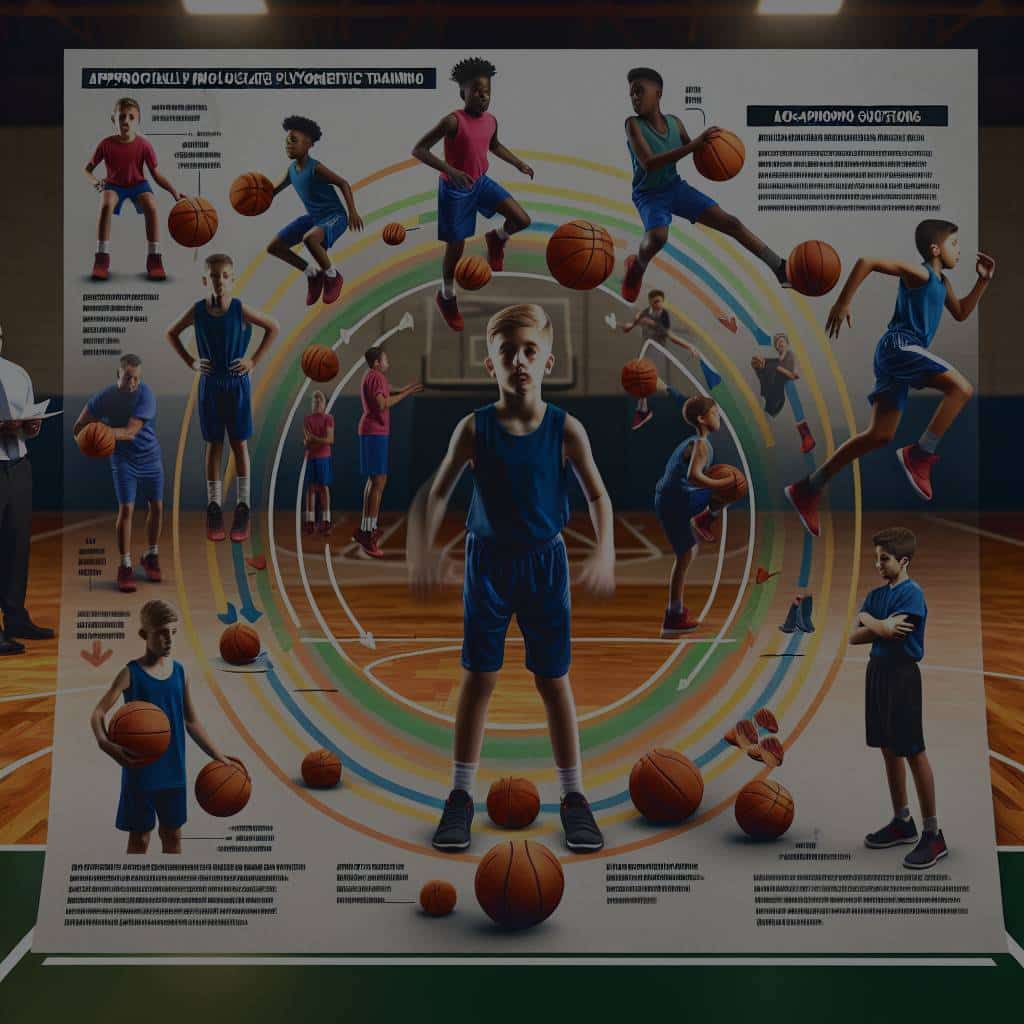How Can Plyometric Training Be Safely Incorporated into Youth Basketball Programs?

Everyone wants players to perform better in the arena of sports, especially when it comes to basketball. Training is a vital part of this performance. One effective method is plyometric training. Often referred to as "jump training" or plyometrics, it is an exercise method that aims to increase muscle power and force, thereby enhancing the performance of athletes. But the question arises – how can plyometric training be safely incorporated into youth basketball programs? That’s what we’re about to explore.
Understanding Plyometric Training
Before we delve into how plyometric training can be safely incorporated into a youth basketball program, it’s essential to understand what plyometrics is. Plyometric exercises involve stretch and contraction sequence of muscle fibers, often known as the stretch-shorten cycle (SSC). This method works by augmenting the muscle power via a fast contraction after a rapid stretch of the same or antagonist muscle.
A voir aussi : What’s the Most Effective Way to Use Sports Psychology in Youth Soccer Coaching?
Plyometric exercises are highly effective and are utilized to enhance the performance of athletes in sports that require speed and power, such as basketball. The exercises often include jumps, hops, bounds, and throws. They work on the principle of Newton’s third law of motion, which states that for every action, there is an equal and opposite reaction.
However, while plyometrics can significantly improve performance, they are high-intensity exercises and can be associated with a risk of injury, especially in young athletes, if not performed correctly. Hence, the safety of the athletes should be a priority.
A lire en complément : How Can Periodic Water Intake During Matches Benefit Tennis Players?
Incorporating Plyometrics in Youth Basketball Safely
The benefits of plyometric training are numerous. It improves speed, force, and athletic power, leading to enhanced performance. However, the key to gaining these benefits lies in the safe and correct incorporation of these exercises into the training regimen. Here are some ways to do this.
Gradual Introduction of Plyometric Exercises
When introducing plyometric exercises into a youth basketball training program, it’s critical to introduce them gradually. The youth athletes should first be competent in basic resistance training exercises. Once the athletes are comfortable, include low-intensity plyometric exercises such as ankle hops and squat jumps.
Control Volume and Intensity
The volume and intensity of plyometric exercises should be controlled based on the athlete’s age, size, ability, and experience. According to various scholars and studies found on Pubmed, the recommended volume for youth athletes is between 80-100 foot contacts per session. More advanced athletes may handle up to 120 foot contacts. The intensity should also be regulated, starting with low-intensity exercises and gradually moving to more advanced ones.
Monitoring Athlete Progress
Monitoring the athletes’ progress is crucial when incorporating plyometric training. Regular testing should be done to measure power, speed, and strength. This will not only track the effectiveness of the training but also help in adjusting the program as needed.
Ensuring Proper Technique and Supervision
One of the most critical aspects of plyometric training is proper execution. Improper exercise technique can lead to injury. Therefore, it’s essential to provide detailed instructions and demonstrations, ensuring that athletes understand and can correctly perform the exercises.
It’s also important to have qualified supervision during the training sessions. A trained professional can monitor the athletes to ensure they are executing the exercises correctly, as well as intervene if necessary to prevent injury.
Understanding the Importance of Rest and Recovery
Plyometric training is high-intensity, and it demands a lot from the body. Therefore, adequate rest and recovery time are crucial components of a safe and effective plyometric program. Youth athletes require more recovery time as their bodies are still growing and developing.
Rest periods between sets should be long enough to allow for almost complete recovery. According to several scholars referenced in Pubmed, a good rule of thumb for rest and recovery in plyometric training is a work to rest ratio of 1:5 to 1:10. Additionally, it’s important to schedule rest days in between plyometric training sessions to allow for recovery and muscle repair.
The Role of Warm-Up and Cool-Down Phases
Just like any other form of exercise, a plyometric training session should also include warm-up and cool-down phases. The warm-up phase prepares the body for the training session ahead and can help reduce the risk of injury. It usually involves light cardio exercises and dynamic stretching.
Similarly, the cool-down phase is also important to gradually bring down the heart rate and help start the recovery process. It generally includes light exercises and static stretching. Both these phases are critical for a safe and effective plyometric training session.
In conclusion, plyometric training can offer numerous benefits for youth basketball athletes, including improved speed, power, and performance. However, the safety of the athletes should always be prioritized. Through gradual introduction of exercises, proper technique, adequate rest, and suitable supervision, plyometric training can be safely incorporated into youth basketball programs.
Plyometric Training Benefits and Concerns for Youth Basketball
While plyometric training is incredibly beneficial, it is not without its concerns, especially when implemented into youth basketball programs. The high-intensity nature of plyometric exercises can be demanding and potentially harmful if not carried out correctly. Therefore, it is essential to understand both the advantages and potential risks associated with this type of training.
Benefits of Plyometric Training
Plyometric training can significantly improve a young athlete’s performance in basketball. It enhances the power output, crucial for activities like sprinting, jumping, and changing direction – all of which are integral components of basketball. Plyometric exercises also improve neuromuscular efficiency, which contributes to better coordination and movement efficiency.
Studies found on PubMed and Google Scholar have shown that plyometric training can improve lower body strength, vertical jump performance, and agility in youth basketball players. These performance improvements can potentially lead to increased success on the basketball court by improving key basketball skills such as shooting, rebounding, and defensive abilities.
Concerns and Risks of Plyometric Training
Despite the numerous benefits, plyometric training comes with a risk of injury if not conducted properly. The high-intensity nature of these exercises, including constant jumping and landing, can potentially lead to overuse injuries, especially in the lower body.
Moreover, young athletes are at a higher risk due to their still-growing and developing musculoskeletal system. Thus, a lack of proper technique, supervision, and an appropriate training load can lead to injuries such as strains, sprains, or even fractures. Therefore, it’s crucial to take the necessary precautions when incorporating plyometric training into youth basketball programs.
Conclusion: Plyometric Training in Youth Basketball – A Game Changer
In conclusion, plyometric training can be a game-changer for youth basketball programs. The benefits are vast – from improved speed and power to better coordination and movement efficiency. This training method can have a positive impact on the performance of young basketball players, enhancing their skills on the court.
However, the high-intensity nature of plyometric exercises necessitates a cautious approach when incorporating them into youth basketball programs. Ensuring proper technique, monitoring progress, providing adequate rest, and having trained supervision are crucial for minimizing risk and maximizing benefit.
When done correctly, plyometric training can be a powerful tool in the arsenal of a youth basketball training program. It can open a separate window of opportunities for young athletes, aiding in their basketball prowess and performance. Therefore, with the right guidance and approach, plyometric training can be safely and effectively incorporated into youth basketball programs, resulting in stronger, more agile, and powerful basketball players.
